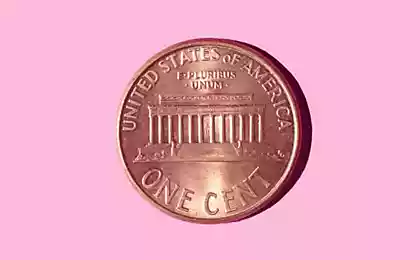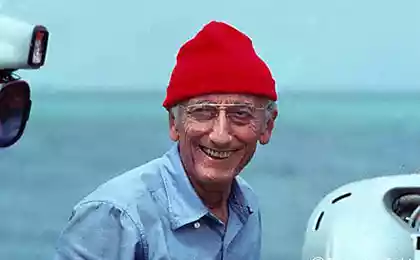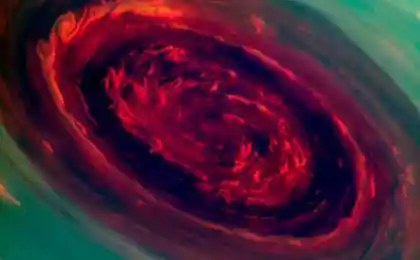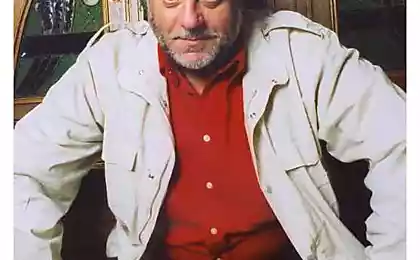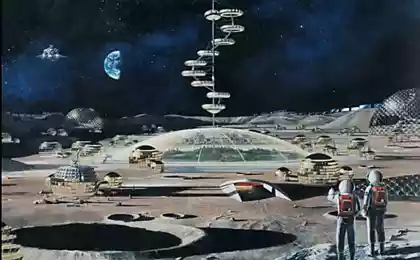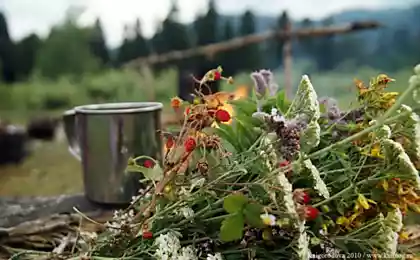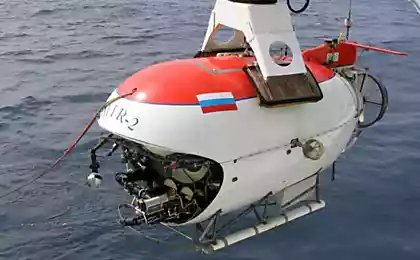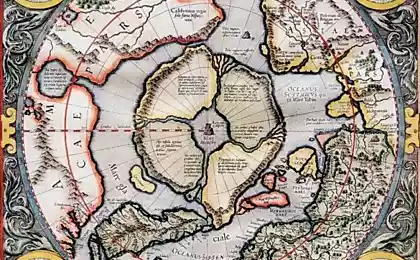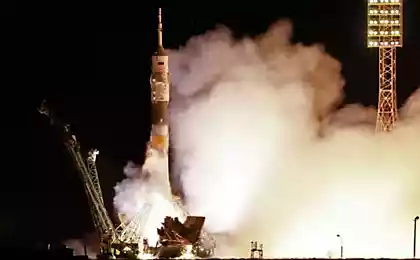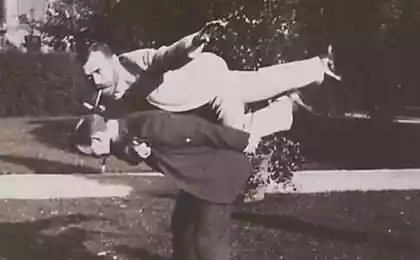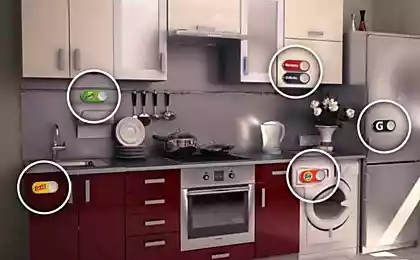2291
On the trail of Cousteau, or a new odyssey for the Russian Crowdfunding
Dear friends! We continue to talk about the most interesting Russian kraudfandingovye projects. This time we met (and we want to introduce you) with the expedition "Akvatilis", which is also called the "New Odyssey". As you can see, project to collect 1, 5 million rubles until 31 October . In general, get acquainted with the author, whom we on the channel "Simple Science" among themselves call "Cousteau» i>
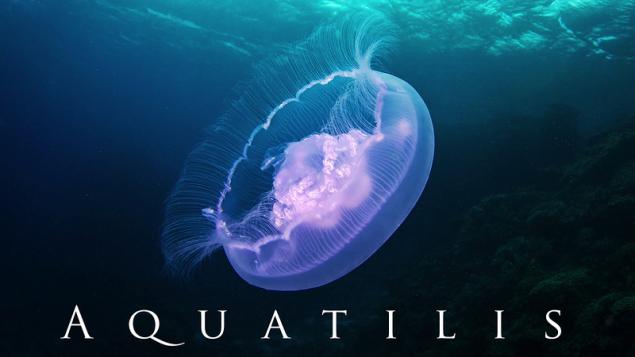
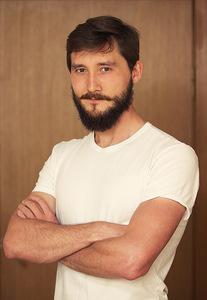
About the expedition
Hi, Habr! My name is Alexander Semenov, I'm underwater photographer and marine biologist. Together with my team I'm working on scientific and popular project of incredible beauty, which we think will be interesting and more than helpful in many different circles. Never before has the research and discoveries could not submit so easily and beautifully as you can do it now using the power of media platforms and social networks. Now you can bring any content directly to an interested audience in just one click. And we can show people the ocean. Show the way it did not see anyone, ever. Since the days of Captain Cousteau no one tried to start a new odyssey, armed with modern technology and keeping pace with progress. And the ocean, in the meantime, as he was, and remains virtually unexplored.

Therefore, we decided to organize an expedition, an underwater odyssey of the XXI century, equipped with the most advanced photo and video equipment, controlled deep robots and internet on board. In most pleasant form of information can be found directly on bumstartere. There's quite a lot of text, but I'll be glad if you read it. Such in Russia (and the world) did no one, and it is unlikely someone will meet, because in addition to the simple desire there must be a combination of many factors. I'll tell you some details beyond written in bumstartere, deployed and explain the reasons for his vision of the goals of the expedition.
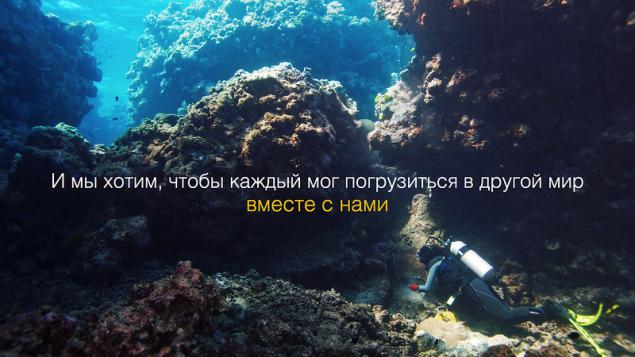
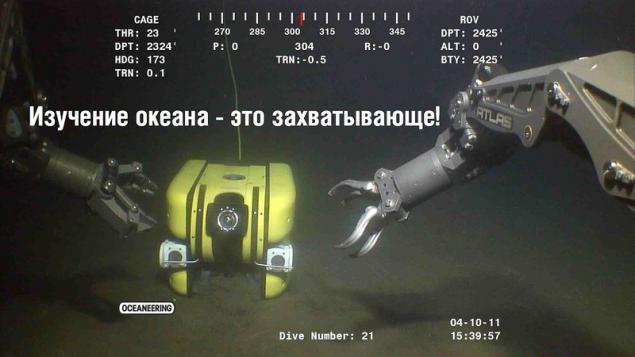
Scientific expedition leitmotif - the study of gelatinous plankton: jellyfish, ctenophores, salps, and other Siphonophora extremely gentle ocean living creatures that can fall apart (and often does) even from a single touch. Watch these creatures can only be under water in their natural habitat. And it's either diving in open water, where divers plunge into the bottomless blue space on a special system of ropes or controlled by manned and unmanned vehicles. Due to the mass of technical difficulties expeditions for soft plankton in the history of science has been too little, and a decent fragment of our knowledge of the ocean is still slowly hovers somewhere in its depths.
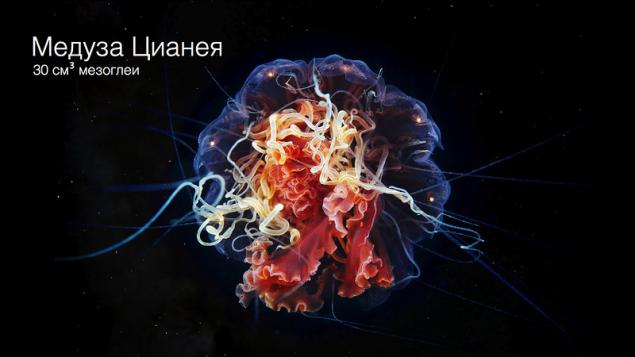
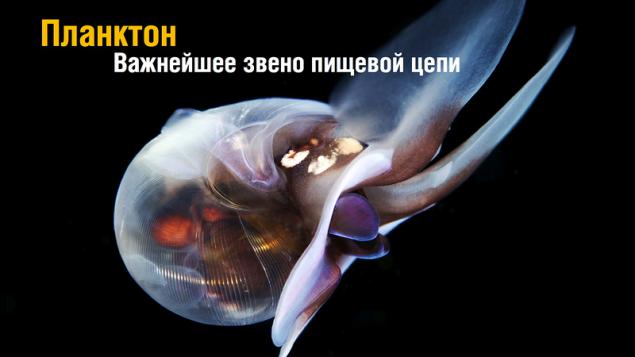
We have a team of young scientists, divers and sailors of this, reliable yacht and a great experience filming underwater and marine research. And we want to share all that we know now, and so surprising that we see there, in the depths. We can literally show that the study of the ocean and strange creatures inhabiting it - it's really interesting and exciting. This expedition organized by people with skills that there is virtually no one in the world - it is a scientific closeup and video, and underwater, which greatly complicates the task. We know how to shoot polusantimetrovuyu almost invisible animals, which hangs in the water column, with the quality and detail that no figure can not be compared. Ie produce scientific illustrations of the highest quality. Since the time of Haeckel's drawings few were able to do something better, but the need is. From textbook to textbook, a poster on the poster wander the ancient charts and pictures, blurry photograph shaggy's, and publications and books are often illustrated by pictures, filmed on a bar of soap through the eyepiece of the microscope. And no one is trying to do better.
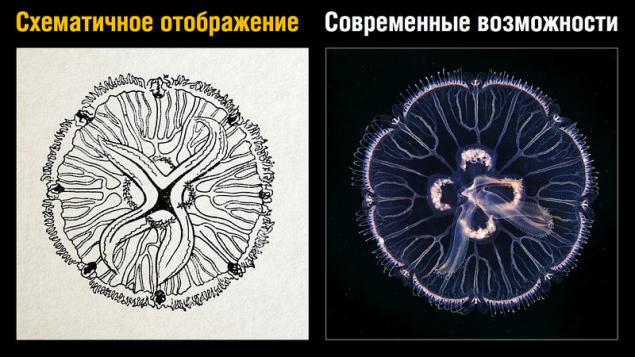

The objectives of the project
We want to (and can) to raise the bar for scientific illustration to show what "beautiful" science and generally let people know that nauchnikov - is smart, cheerful and tough guys who can normal language to explain what they are doing and why. And, in our case a great success - to show it. Because photos and videos - is that you can almost "touch", see the result. The quality of these results, we already have a whole world wonders.
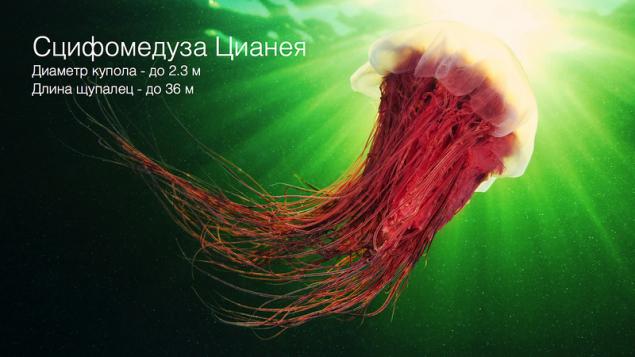
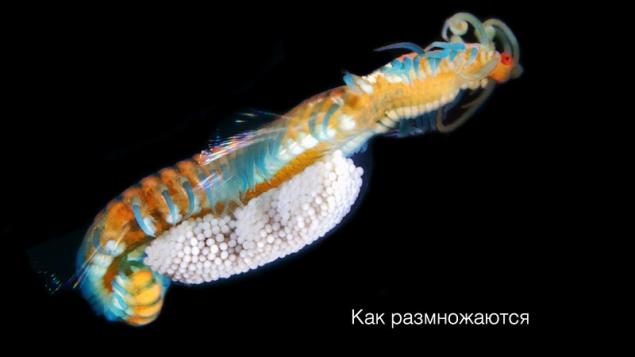
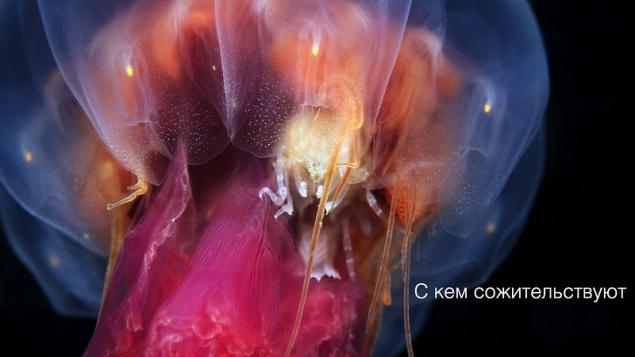
Illustration illustration and science itself as well? Quite often asked what the results of this expedition we expect to get, and how it will be useful to the area of science, which we are engaged. The answer is: the science that goes through the camera viewfinder, all is well. On the White Sea Biological Station of Moscow State University, we are no longer a one-year use scientific methods photo- and video surveillance under water more than productive. And in recent publications Steven Haddock (the steepest in the world planktonology), does promoted the idea that observation in their natural habitat with the help of high-resolution cameras - this is the future of learning gelatinous plankton. It is.
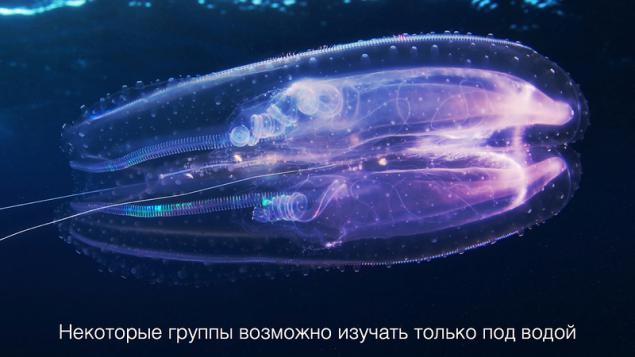
In the pictures 20-30 megapixels, you can see details which can not always be seen under a binocular microscope, to study the structure removed objects pinpoint moments behavior. In the video, it all comes out even in the dynamics, albeit with less detail. At the output of the scientific world gets a few thousand photos and videos of the highest quality with reference to the coordinates and other parameters can understand the structure can be illustrated books and articles can study the behavior and food connection. And just received pictures of animals, which have seen only a few people in the world, and many have not seen at all. If you get into Google and look for photos of plankton, and you wonder how bad. This is a gap that needs filling. And we can do it better than most of the research groups in the world.
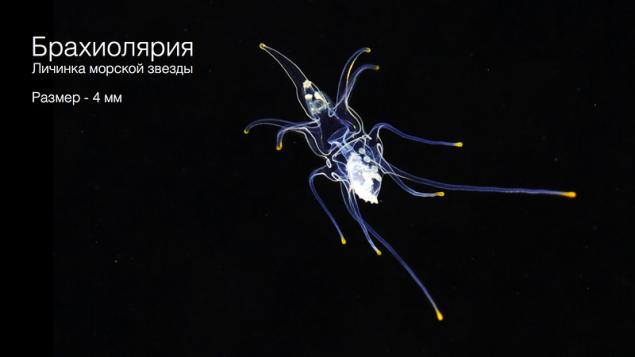
The second point - the new species. There are so a nonzero probability that we will find new species. Now a little more than 7,060 described species of planktonic organisms, of which 1,180 species - a gelatinous plankton. What good is that, after the expedition they will, for example, 7082 and 1189? As the opening of these species will affect humanity as a whole?
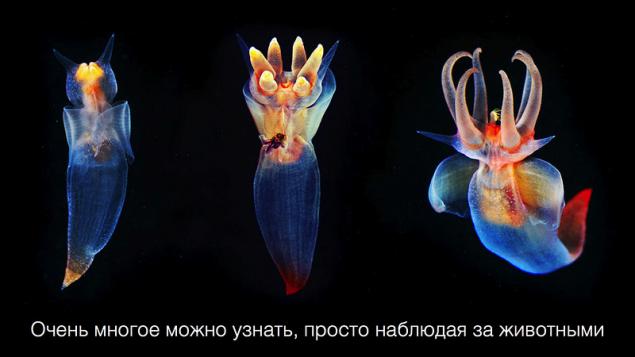
What we are likely to find and describe new species - that's just fine! Twenty-five people in the world who do this will be just as happy. The rest will say, "Cool, yes," admire fotochki video and forget. For science it is important, really, because the discovery of new species and a detailed study of the life of each medusae - a deepening of our knowledge about the world. Without separate fragments puzzle scientific picture of the world does not develop.
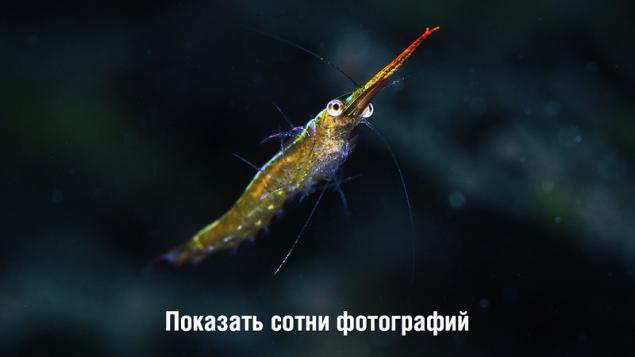
Scientific results that we can get to be significant and welcome addition to the main program, because our mission - is not science for science's sake. Our goal - to open the underwater world for everyone and to make knowledge accessible. Education, broaden their horizons, the popularization of science - that's our main goal. We love the sea and want the next generation, as we are at the time, grew with the dream of the sea and travel into the unknown for people to learn new things, interested in the world and umnel. We want to show that a few people can do the impossible and turn the idea of modern science.
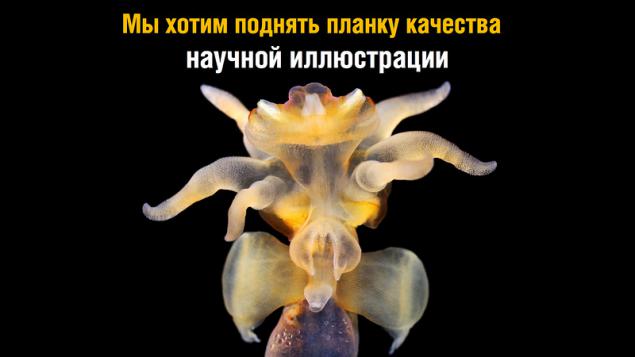
I recently did a presentation on the native biological faculty of Moscow State University, a little worried, because for the first time talking about something very important for myself, but managed to convey the essence of such. Half an hour answering questions we did not insert :)
This dream, as it turns out, is shared by many. More than 800 people have already poured into your crowd, gathered jointly by more than a million. We now have the final frontier when it is necessary to collect the remaining 400,000. And here we turn to the collective conscious.
Funding requirements
Crowdfunding for bumstartere - just the beginning, the first step that will speed up the preparation of the expedition. We have to do a lot more before I go on a trip. 1, 5 million - is 1% of the total cost of the expedition. This percentage we need to make some urgent and important things, without which we are still sad: register and open his own company (NGOs), through which we can work with sponsors and implement all procurement, bring the start of repair yachts, arrange the necessary documents and resolution, and to prepare an English project at a very serious level in collaboration with professionals to tie relations with major sponsors. Plus, there's a whole heap of minor cases, all of which are a little bit, but eventually add up to a decent amount.
Since the amount is not very small, we will launch another of crowd and Kick / indigougou, but for the western market should be very well prepared. Now, at the stage of "preparation for the preparation of" our project looks a bit blurred, there is silly to argue, just an expedition of this magnitude is very difficult to stick to a rigid framework and outline monosyllabic target. We work with the best experts in the scientific and technical areas related to the expedition, define and concretize the range of problems and their possible solutions, so in the next six months, the project will become much more formalized. I can sum up what we have now:
Scientific goals: i>
to fill important gaps in knowledge about the gelatinous zooplankton, one of the main parts of the ocean food chain, by studying animals in their natural habitat; Search and description of new species; < collection and fixation of planktonic organisms for DNA and RNA analysis; a database on zoogeography: photos and video of certain types of animals with reference to the coordinates, depth, temperature, salinity, and time; li > the creation of surround bank photo and video of the world's oceans, which can be used for scientific and educational purposes; working out methods of underwater scientific observation, development and testing methods for studying bioluminescence and fluorescence; li > development of methods of satellite mapping "garbage island" and giant plankton; search and development of new / prospective dive sites in the world's oceans; the implementation of local research projects in conjunction with laboratories and researchers from around the world;
Social problems: i>
acquaintance million people around the world with the unknown, little-known life of the world's oceans; popularization of science through the adventure show: live in science, the present study, understandable and accessible to everyone; creating an image of the modern researcher, using the latest technology and modern technology, is preparing to open, to communicate with the world and to work in extreme conditions; to attract people's attention to the environmental problems of the ocean; < /
Common tasks: i>
the launch of the new "Underwater Odyssey", continues the work of the great explorers of the past on a fundamentally different level; improving the quality of scientific illustration strips; introduction of the adventure of romance in our prosaic world ;
In fact, I can still very long talk about all sorts of technical details about the methodology, about the route, about a yacht and other details of the expedition, but then expands to fill the post imperceptible sizes. Therefore, I am happy to answer any questions about the expedition in the comments and I will be glad if you join the sponsors of our project!
Expedition Aquatilis Internet:
http://www.flickr.com/photos/a_semenov/
http://clione.ru/
http://shilovpope.livejournal.com/
http://vk.com/aquatilis
**
take this opportunity to remind you that this book is for children with simple experiments is nearing printing. Preorder the book is still open. i>
Source: habrahabr.ru/company/gtv/blog/198512/


About the expedition
Hi, Habr! My name is Alexander Semenov, I'm underwater photographer and marine biologist. Together with my team I'm working on scientific and popular project of incredible beauty, which we think will be interesting and more than helpful in many different circles. Never before has the research and discoveries could not submit so easily and beautifully as you can do it now using the power of media platforms and social networks. Now you can bring any content directly to an interested audience in just one click. And we can show people the ocean. Show the way it did not see anyone, ever. Since the days of Captain Cousteau no one tried to start a new odyssey, armed with modern technology and keeping pace with progress. And the ocean, in the meantime, as he was, and remains virtually unexplored.

Therefore, we decided to organize an expedition, an underwater odyssey of the XXI century, equipped with the most advanced photo and video equipment, controlled deep robots and internet on board. In most pleasant form of information can be found directly on bumstartere. There's quite a lot of text, but I'll be glad if you read it. Such in Russia (and the world) did no one, and it is unlikely someone will meet, because in addition to the simple desire there must be a combination of many factors. I'll tell you some details beyond written in bumstartere, deployed and explain the reasons for his vision of the goals of the expedition.


Scientific expedition leitmotif - the study of gelatinous plankton: jellyfish, ctenophores, salps, and other Siphonophora extremely gentle ocean living creatures that can fall apart (and often does) even from a single touch. Watch these creatures can only be under water in their natural habitat. And it's either diving in open water, where divers plunge into the bottomless blue space on a special system of ropes or controlled by manned and unmanned vehicles. Due to the mass of technical difficulties expeditions for soft plankton in the history of science has been too little, and a decent fragment of our knowledge of the ocean is still slowly hovers somewhere in its depths.


We have a team of young scientists, divers and sailors of this, reliable yacht and a great experience filming underwater and marine research. And we want to share all that we know now, and so surprising that we see there, in the depths. We can literally show that the study of the ocean and strange creatures inhabiting it - it's really interesting and exciting. This expedition organized by people with skills that there is virtually no one in the world - it is a scientific closeup and video, and underwater, which greatly complicates the task. We know how to shoot polusantimetrovuyu almost invisible animals, which hangs in the water column, with the quality and detail that no figure can not be compared. Ie produce scientific illustrations of the highest quality. Since the time of Haeckel's drawings few were able to do something better, but the need is. From textbook to textbook, a poster on the poster wander the ancient charts and pictures, blurry photograph shaggy's, and publications and books are often illustrated by pictures, filmed on a bar of soap through the eyepiece of the microscope. And no one is trying to do better.


The objectives of the project
We want to (and can) to raise the bar for scientific illustration to show what "beautiful" science and generally let people know that nauchnikov - is smart, cheerful and tough guys who can normal language to explain what they are doing and why. And, in our case a great success - to show it. Because photos and videos - is that you can almost "touch", see the result. The quality of these results, we already have a whole world wonders.



Illustration illustration and science itself as well? Quite often asked what the results of this expedition we expect to get, and how it will be useful to the area of science, which we are engaged. The answer is: the science that goes through the camera viewfinder, all is well. On the White Sea Biological Station of Moscow State University, we are no longer a one-year use scientific methods photo- and video surveillance under water more than productive. And in recent publications Steven Haddock (the steepest in the world planktonology), does promoted the idea that observation in their natural habitat with the help of high-resolution cameras - this is the future of learning gelatinous plankton. It is.

In the pictures 20-30 megapixels, you can see details which can not always be seen under a binocular microscope, to study the structure removed objects pinpoint moments behavior. In the video, it all comes out even in the dynamics, albeit with less detail. At the output of the scientific world gets a few thousand photos and videos of the highest quality with reference to the coordinates and other parameters can understand the structure can be illustrated books and articles can study the behavior and food connection. And just received pictures of animals, which have seen only a few people in the world, and many have not seen at all. If you get into Google and look for photos of plankton, and you wonder how bad. This is a gap that needs filling. And we can do it better than most of the research groups in the world.

The second point - the new species. There are so a nonzero probability that we will find new species. Now a little more than 7,060 described species of planktonic organisms, of which 1,180 species - a gelatinous plankton. What good is that, after the expedition they will, for example, 7082 and 1189? As the opening of these species will affect humanity as a whole?

What we are likely to find and describe new species - that's just fine! Twenty-five people in the world who do this will be just as happy. The rest will say, "Cool, yes," admire fotochki video and forget. For science it is important, really, because the discovery of new species and a detailed study of the life of each medusae - a deepening of our knowledge about the world. Without separate fragments puzzle scientific picture of the world does not develop.

Scientific results that we can get to be significant and welcome addition to the main program, because our mission - is not science for science's sake. Our goal - to open the underwater world for everyone and to make knowledge accessible. Education, broaden their horizons, the popularization of science - that's our main goal. We love the sea and want the next generation, as we are at the time, grew with the dream of the sea and travel into the unknown for people to learn new things, interested in the world and umnel. We want to show that a few people can do the impossible and turn the idea of modern science.

I recently did a presentation on the native biological faculty of Moscow State University, a little worried, because for the first time talking about something very important for myself, but managed to convey the essence of such. Half an hour answering questions we did not insert :)
This dream, as it turns out, is shared by many. More than 800 people have already poured into your crowd, gathered jointly by more than a million. We now have the final frontier when it is necessary to collect the remaining 400,000. And here we turn to the collective conscious.
Funding requirements
Crowdfunding for bumstartere - just the beginning, the first step that will speed up the preparation of the expedition. We have to do a lot more before I go on a trip. 1, 5 million - is 1% of the total cost of the expedition. This percentage we need to make some urgent and important things, without which we are still sad: register and open his own company (NGOs), through which we can work with sponsors and implement all procurement, bring the start of repair yachts, arrange the necessary documents and resolution, and to prepare an English project at a very serious level in collaboration with professionals to tie relations with major sponsors. Plus, there's a whole heap of minor cases, all of which are a little bit, but eventually add up to a decent amount.
Since the amount is not very small, we will launch another of crowd and Kick / indigougou, but for the western market should be very well prepared. Now, at the stage of "preparation for the preparation of" our project looks a bit blurred, there is silly to argue, just an expedition of this magnitude is very difficult to stick to a rigid framework and outline monosyllabic target. We work with the best experts in the scientific and technical areas related to the expedition, define and concretize the range of problems and their possible solutions, so in the next six months, the project will become much more formalized. I can sum up what we have now:
Scientific goals: i>
to fill important gaps in knowledge about the gelatinous zooplankton, one of the main parts of the ocean food chain, by studying animals in their natural habitat; Search and description of new species; < collection and fixation of planktonic organisms for DNA and RNA analysis; a database on zoogeography: photos and video of certain types of animals with reference to the coordinates, depth, temperature, salinity, and time; li > the creation of surround bank photo and video of the world's oceans, which can be used for scientific and educational purposes; working out methods of underwater scientific observation, development and testing methods for studying bioluminescence and fluorescence; li > development of methods of satellite mapping "garbage island" and giant plankton; search and development of new / prospective dive sites in the world's oceans; the implementation of local research projects in conjunction with laboratories and researchers from around the world;
Social problems: i>
acquaintance million people around the world with the unknown, little-known life of the world's oceans; popularization of science through the adventure show: live in science, the present study, understandable and accessible to everyone; creating an image of the modern researcher, using the latest technology and modern technology, is preparing to open, to communicate with the world and to work in extreme conditions; to attract people's attention to the environmental problems of the ocean; < /
Common tasks: i>
the launch of the new "Underwater Odyssey", continues the work of the great explorers of the past on a fundamentally different level; improving the quality of scientific illustration strips; introduction of the adventure of romance in our prosaic world ;
In fact, I can still very long talk about all sorts of technical details about the methodology, about the route, about a yacht and other details of the expedition, but then expands to fill the post imperceptible sizes. Therefore, I am happy to answer any questions about the expedition in the comments and I will be glad if you join the sponsors of our project!
Expedition Aquatilis Internet:
http://www.flickr.com/photos/a_semenov/
http://clione.ru/
http://shilovpope.livejournal.com/
http://vk.com/aquatilis
**
take this opportunity to remind you that this book is for children with simple experiments is nearing printing. Preorder the book is still open. i>
Source: habrahabr.ru/company/gtv/blog/198512/
The first eight videos of our books in the public domain
Experiments with liquid nitrogen, plastic bottles and balls for table tennis






